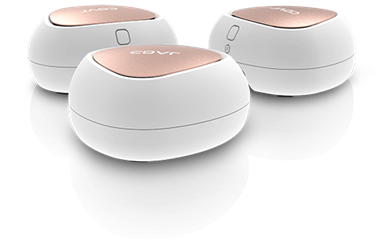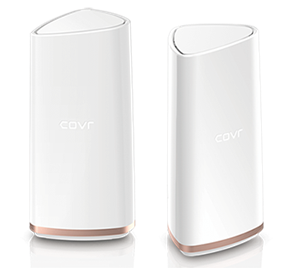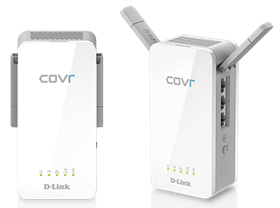Untangling home mesh WiFi networks
Untangling home mesh WiFi networks
Download as PDFIt’s the ultimate twenty-first century gripe – the internet is lightning fast in the front room, but slows to a crawl in the bedroom. Suddenly that tablet you got specifically to watch Netflix in bed doesn’t seem like such a sound investment.
Never fear though, mesh networking has arrived to eliminate those Wi-Fi blackspots and ensure you can still stay up too late watching boxsets. However, before you can enjoy a life of streaming and sleep deprivation, it’s probably best to understand what exactly mesh networking is.
Essentially, in your average home Wi-Fi setup, you’ll have a router that spreads a wired signal out as waves across your home. Unfortunately, walls, doors and all the other solid things in your house will weaken this signal, meaning those in larger homes or with thicker walls in particular may receive poor coverage.
In a mesh network, additional devices called nodes are placed around your house that transmit Wi-Fi signals more efficiently and eliminate areas of poor reception. Think of it like passing notes in the classroom at school. If you’re next to your friend, you can pass the note directly. If you’re sat at the back of class (the router), and your friend is at the front (a device in a blackspot area), the note will have to pass through the hands of several classmates (mesh networking devices) to reach him.
What’s important in this scenario is that, not wanting to get caught by the teacher, these classmates will pass the note in the most efficient way possible.
However, like most things in tech, it’s a little more complex than that. There are three types of mesh networking currently on offer that fit various scenarios. Before you go out and invest in a mesh networking setup, you should consider what you need the network to do and which option fits best.
Shared Wireless

COVR-C1203 AC1200 Dual Band Whole Home Mesh Wi‑Fi System
The most straightforward and affordable of the three types of mesh networking on offer, shared wireless places all connected devices and the connectivity between the various mesh network nodes on the same radio bandwidth. This means there can be slowdowns if multiple devices are running bandwidth heavy applications like streaming HD video or downloading.
Imagine a road - in a shared wireless setup all traffic is moving in the same lanes. This means that, if multiple HGVs happen to be in the lanes at the same, traffic necessarily slows before they complete their journey.
Essentially, shared wireless will eliminate blackspots, but depending on network stresses at a given time, you can’t necessarily guarantee the speeds you need. If you have a realistic view of your network usage, and know it is not demanding, shared wireless is the most cost effective means of moving into mesh networking to ensure a signal where needed.
Dedicated Wireless

COVR‑2202 AC2200 Tri‑Band Whole Home Mesh WiFi System
Dedicated wireless allocates radio channels solely to deal with the communication between the nodes that handle backhaul traffic. Backhaul traffic is the nodes’ communication back to your router, rather than to your connected devices like laptops.
Continuing with the road analogy, this is more like having a separate bus lane. The traffic that’s most important to you (i.e. that headed to your devices) won’t face congestion due to the HGV traffic headed between nodes and the router.
This will ensure you get coverage and top speeds, however, it comes at a premium, and mesh network devices that handle backhaul traffic like this currently come with a heftier price tag. If speed is paramount, dedicated wireless offers more reliable speeds. With 4K HD streaming becoming more commonplace, it is perhaps a more futureproof option when compared to mesh shared wireless backhaul.
Powerline

COVR‑P2502 Hybrid Whole Home Mesh Wi‑Fi System
The third and final type of mesh networking compliments the Wi-Fi access to devices, by using existing power cabling in your home to send and receive the backhaul and inter-node data. Powerline adds a new route, freeing the Wi-Fi to carry more traffic.
Keeping the travel theme going; powerline is more akin to adding a toll tunnel. The signal can move quickly between distinct points uninterrupted, bypassing an obstacle but branching back to the road network once the “shortcut” has been taken.
A node is plugged into the wall next to your router, and the others where you need strong Wi-Fi signals. Powerline connections generally offer less latency than Wi-Fi. If you need a low latency connection for your gaming PC for instance, powerline will do the trick.
Powerline works best in conjunction with other mesh networking technologies. Its low latency means it’s useful for handling backhaul traffic, whilst you can use Wi-Fi for your devices.
Travelling onwards
Mesh networking is the next step in home Wi-Fi, and as our internet usage only increases, it will soon be the standard for ensuring whole home coverage. If you’re looking to upgrade to mesh networking, be sure to research the brands and devices on offer. Right now, in terms of the balance between affordability and performance, a dual approach of shared wireless mesh, with powerline handling the backhaul, is currently worth looking into.

